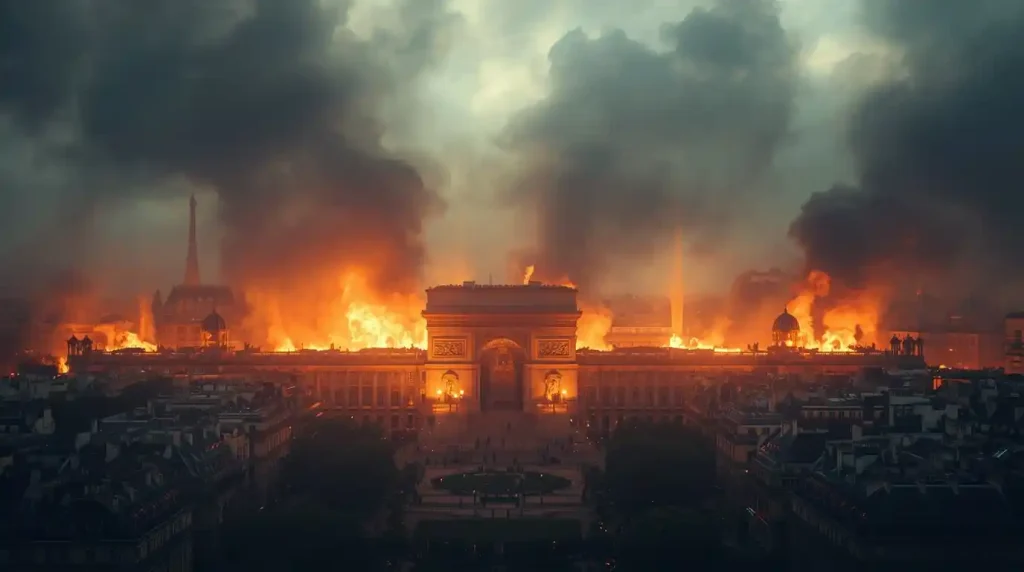A fresh political chapter begins in France under a cloud of economic urgency. The French presidency new cabinet has been unveiled, a pivotal moment for the administration as it confronts one of its most severe tests to date. The announcement, coming after a period of intense political recalibration, signals a strategic shift aimed at steadying the ship. However, the fanfare of the introduction is immediately dampened by the stark reality of the nation’s finances.
With bond yields spiking and market confidence wavering, this freshly assembled team has no grace period. The French presidency new cabinet must immediately navigate a perfect storm of budget pressures, political fragmentation, and soaring public expectations. This is not merely a reshuffle; it is a trial by fire that will define the trajectory of the French government for years to come.
1. The Unveiling: A Cabinet Forged in Crisis
The composition of any new government is a carefully coded message, and the French presidency new cabinet is no exception. The recent unveiling was less about radical change and more about projecting stability and technocratic competence. Key ministries, particularly those dealing with the economy and finance, have been assigned to figures perceived as safe hands, trusted to reassure both international markets and a nervous public.
The selection process for this team was undoubtedly dominated by a single, overriding factor: the escalating budget crisis. Unlike a cabinet formed in a time of prosperity, which might focus on ambitious reform or social programs, this one has a singular, defensive mission: to restore fiscal credibility. The French presidency new cabinet is, therefore, a direct response to the warnings from the European Commission and the anxiety reflected in the bond markets.
Each appointment has been scrutinized for their ability to craft a credible budget, negotiate with opposition parties, and implement potentially unpopular spending cuts or tax adjustments. The very existence and structure of this French presidency new cabinet are a testament to the severity of the economic headwinds it faces.

2. The Budgetary Time Bomb: A Nation on the Edge
To understand the immense pressure on the French presidency new cabinet, one must first grasp the scale of the budgetary challenge. France’s public debt has surged past 110% of its GDP, placing it among the highest in the Eurozone. The budget deficit is persistently above the EU’s 3% limit, triggering an Excessive Deficit Procedure from the European Commission, which mandates a clear and credible correction path.
This is not an abstract problem. It translates into real-world constraints. The government’s borrowing costs are rising as investors demand higher yields to hold French debt, crowding out public spending on essential services like education, healthcare, and infrastructure. The French presidency new cabinet is now trapped between the EU’s demands for fiscal austerity and the French public’s deep-seated resistance to cuts in social welfare and public services. Their first major task will be to present an emergency budget that can pass a vote in the National Assembly—a feat that is far from guaranteed. The success or failure of this French presidency new cabinet will be judged, first and foremost, by its ability to defuse this budgetary time bomb.
3. The Key Players: Profiles in the New Guard
The effectiveness of the French presidency new cabinet will hinge on the performance of a few key individuals in critical economic portfolios. These are the ministers tasked with turning the tide.
- The Minister of Economy and Finance: Often called the most challenging job in the government, this minister is the face of France’s financial policy to the world. The appointee must immediately engage with EU counterparts, financial institutions, and credit rating agencies to restore confidence. Their every word will be dissected by the markets, and their first budget proposal will be the most closely watched document in Europe.
- The Minister of Public Accounts: Working in tandem with the Finance Minister, this role is the sharp end of the stick, responsible for finding savings and plugging fiscal leaks. This minister will be tasked with the unenviable job of identifying which budgets to cut and which programs to scale back, making them a prime target for political and public criticism.
- The Minister of the Interior: While not directly an economic role, this position is crucial for maintaining domestic stability. The French presidency new cabinet is acutely aware that austerity measures could trigger widespread social unrest, similar to the “Yellow Vest” protests of the past. The Interior Minister’s ability to manage public order will be critical to creating the political space needed for economic reforms.

4. Political Minefields: Navigating a Fractured Assembly
Perhaps the most daunting obstacle for the French presidency new cabinet is the political landscape of the National Assembly. Without an absolute majority, the government cannot pass legislation on its own. This transforms governance from a matter of decree into a constant, exhausting process of negotiation and compromise.
The French presidency new cabinet will need to engage in what the French call “coalition politics”—a practice that is often messy and unpredictable. They must either piece together a different majority for every single vote, a fragile and time-consuming endeavor, or strike a more formalized pact with opposition parties, which would inevitably dilute their policy agenda.
The recent political deadlock over pension reform serves as a stark reminder of what happens when the government fails to build consensus. The French presidency new cabinet‘s budget will be a litmus test of its political acumen. If it cannot secure a majority, it could face a vote of no confidence, plunging the country into a fresh political crisis and triggering early legislative elections.
5. Market Jitters: The International Perspective
The world is watching, and its verdict is delivered in real-time through the financial markets. The spread between French and German 10-year government bonds—a key gauge of risk perception in the Eurozone—has widened significantly, indicating growing investor nervousness about France’s fiscal health.
The immediate challenge for the French presidency new cabinet is to narrow this spread. This requires more than just reassuring words; it demands concrete, credible policy announcements. International bodies like the International Monetary Fund (IMF) have issued reports urging France to implement “bold and urgent” fiscal consolidation. The credibility of the French presidency new cabinet is not just a domestic political asset; it is a critical economic variable. A misstep or a perceived lack of resolve could trigger a sell-off in French assets, increasing the government’s borrowing costs and exacerbating the very crisis it is trying to solve. The cabinet’s first 100 days will be crucial in convincing the international community that France is a safe bet.
6. Public Sentiment: A Nation Grows Impatient
While the French presidency new cabinet is focused on spreadsheets and bond yields, the French people are feeling the pinch of inflation and the fear of reduced public services. There is a deep-seated cultural attachment to the country’s social model, and any perceived threat to it is met with fierce resistance.
Polls consistently show that a majority of French citizens oppose cuts to welfare, health, or education spending. The political discourse is already heating up, with opposition leaders from both the left and the far-right positioning themselves as the defenders of the French social model against the austerity they claim the new cabinet represents. The French presidency new cabinet must therefore perform a delicate balancing act: implementing enough fiscal discipline to satisfy Brussels and the markets, while simultaneously convincing the public that the core of the social safety net remains intact. Failure on either front could be catastrophic.
7. Comparative Analysis: Lessons from Past Cabinets
History offers valuable, if sobering, lessons for the French presidency new cabinet. France has a history of political resistance to economic reforms, often forcing presidents to use constitutional tools to bypass parliament.

President Jacques Chirac’s government in the 1990s faced similar market pressure and successfully implemented austerity measures, but at a significant political cost. More recently, President Emmanuel Macron’s early reforms sparked the “Yellow Vest” movement, demonstrating the volcanic potential of French public discontent. The French presidency new cabinet must study these precedents carefully. The use of Article 49.3 of the Constitution, which allows the government to pass a budget without a vote (but risks a no-confidence motion), is already being discussed as a potential, if politically nuclear, option. The legacy of this French presidency new cabinet will be determined by its ability to learn from the triumphs and failures of its predecessors.
8. The Road Ahead: Scenarios for Survival and Failure
The path forward for the French presidency new cabinet is narrow and fraught with peril. Several scenarios are plausible over the coming months.
- Scenario 1: The Successful Negotiation: The cabinet successfully brokers a stable coalition or a series of pacts with centrist parties, allowing it to pass a credible budget. Markets calm, the EU is satisfied, and the government survives, albeit with a weakened and compromised policy agenda.
- Scenario 2: Governing by Decree: Faced with parliamentary gridlock, the government increasingly relies on constitutional powers to force through its budget, leading to a dramatic rise in social unrest and constant threats of no-confidence votes. The country becomes increasingly ungovernable.
- Scenario 3: Legislative Elections: A budget is voted down, or the government loses a vote of confidence. The French presidency new cabinet collapses, leading to snap elections that could potentially return an even more fragmented and unworkable National Assembly, or bring a rival political force to power.
9. Conclusion: An Inevitable Clash on the Horizon
The unveiling of the French presidency new cabinet is more than a routine political event; it is the opening act of a high-stakes drama that will test the resilience of French democracy and its economy. The team has been assembled with a clear, urgent purpose: to pull the nation back from a fiscal precipice.
However, the mission is complicated by a hostile parliament, a skeptical international community, and a public with little appetite for austerity. The French presidency new cabinet has no easy options. Its members are caught in a pincer movement between European obligations and domestic political reality. A clash is inevitable. The only questions are when it will erupt, how severe it will be, and whether this new team has the skill, unity, and political capital to survive it. The fate of the French presidency new cabinet is inextricably linked to the economic and political stability of France itself.
Table of Contents
Our Related News Website:
Sports: Sport Flash
World News: The News Grid
Environment News: Eco Alert
Business News: Biz Trend Now
Dailt News: Unbiased Daily
Realm News: Real Time Realm
Retrun to our Homepage
Reference Website:
https://edition.cnn.com/2025/10/12/europe/france-presidency-new-cabinet-latam-intl